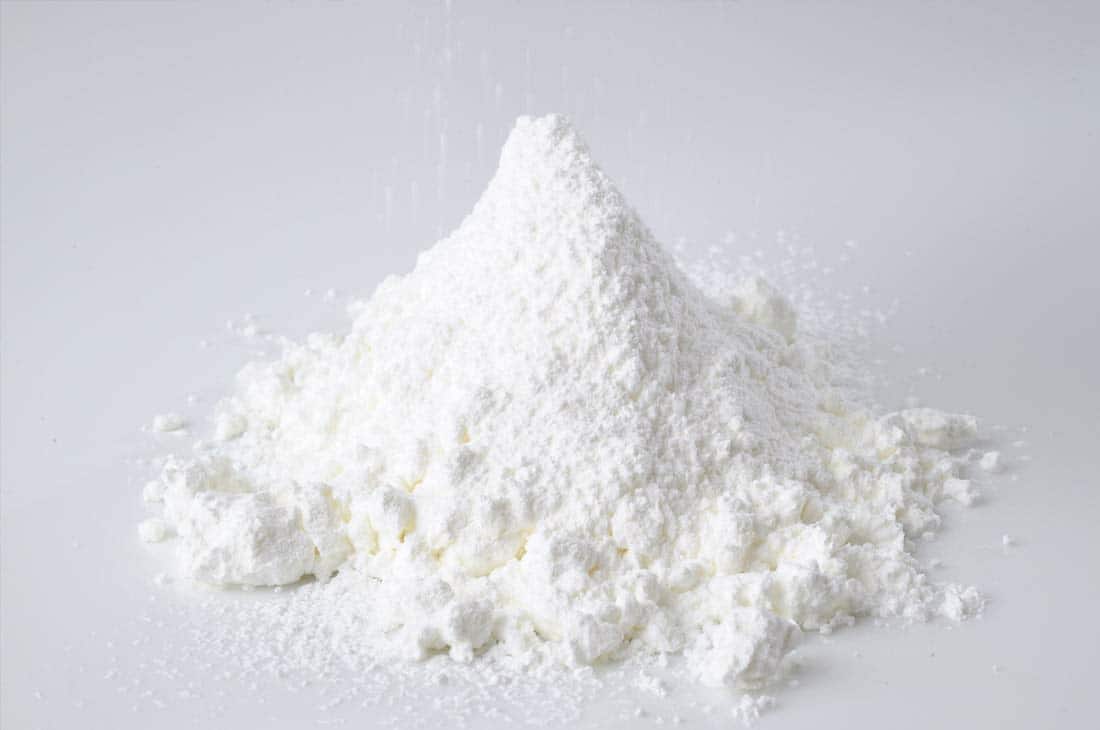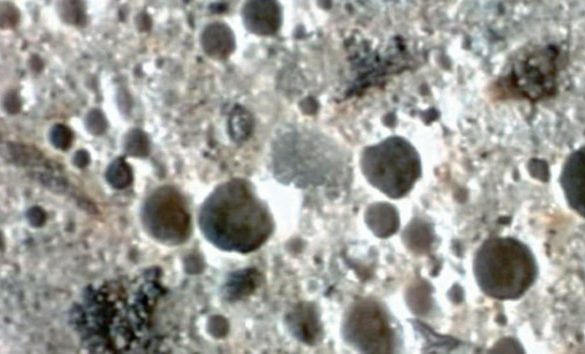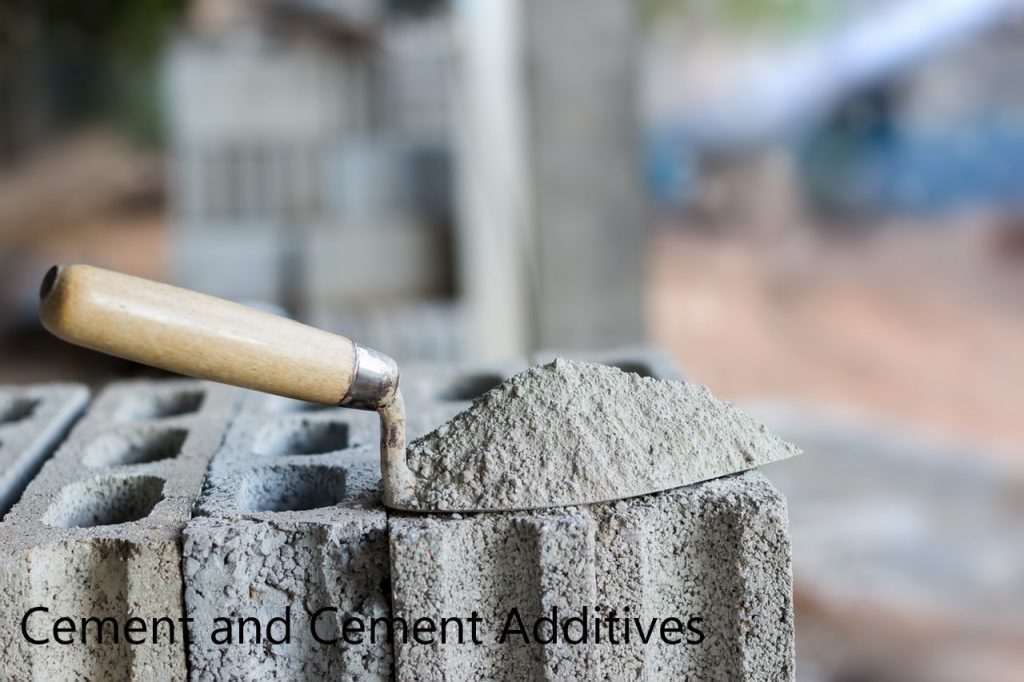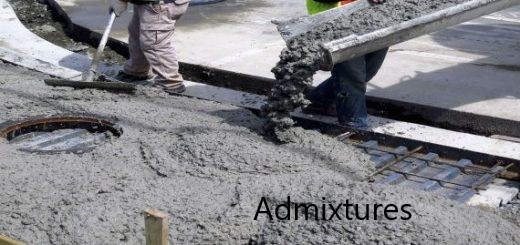Classification of cement types has been made by the different standards such as ASTM, ACI, BS, etc. There are considerable differences in the classification system.
However, almost all the classification systems are oriented to the function they are used for.
Let’s start with the general classification of the different cement types.
Ordinary Portland Cement (OPC)
Ordinary portland cement is the type of cement most widely used in the world. It is quite common and readily available due to its use on a major scale. OPC is also called Portland cement.
OPC is a combination of the materials such as Lime, Silica, Alumina, Iron Oxide, etc. The following table indicates the material composition.
| Lime (CaO) | 60 to 67% |
| Silica (SiO2) | 17 to 25% |
| Alumina (Al2O3) | 3 to 8% |
| Iron oxide (Fe2O3) | 0.5 to 6% |
| Magnesia (MgO) | 0.1 to 4% |
| Sulphur trioxide (SO3) | 1 to 3% |
Portland Pozzalana Cement (PPC)
Portland pozzolana cement is a combination of ordinary portland cement, gypsum, and pozzolanic materials in certain proportions.
Portland pozzolana cement is used to construct hydraulic structures and structures are closed to the sea. It has a good finish and different types of finishes can be obtained. Further, due to the fineness, it is suitable for plastering works. In addition, PPC use in the post-tension and pretension construction can be highlighted.
Rapid Hardening Cement
As the name implies, rapid hardening cement types can be identified as types of cement that gain strength rapidly. This is also the type of portland cement modified to gain strength rapidly.
The rapid hardening cement is mostly used in the structure that required quick hardening. Depending on the nature of the structure, the type of cement will be selected.
For example, when we are replacing the bearing pad of an existing bridge, we may need to place leveling screed. The strength gain may be required by 12 hours as the bridge need to be open for the traffic. In such situations, we used the rapid hardening cement.
Rapid hardening cement types are capable of resisting the chemical attacks such as sulfate attacks.
Low Heat Cement
Low heat cement is the type of cement that is generating low heat of hydration. Generally, when the thickness of the element is increased, the heat of hydration increases. When the volume of concrete increases, high heat is generated.
If the rise of the temperature of the concrete exceeds 70-750C, there is a possibility of forming the delayed ettringites. Therefore, it is a must to reduce the heat of hydration. Therefore, the use of low heat cement is encouraged.
The article Low Heat Cement could be studied for further information.
Sulphate Resisting Cement
Sulfates could be included in the groundwater or ground. Due to environmental reasons dumping of waste could lead to the accumulation of sulfates. In addition, there are a considerable amount of sulfates in the seawater.
When the construction is done in these environments, cement types that have the ability to resist sulfates attacks shall be used. There are special types of cement that have been modified the chemical composition to developed resistance against chemical attacks.
Reduction in the Tricalcium Aluminate (C3A) and Tetracalcium Aluminoferrie (C4AF) content is made in these types of cement to reduce the resistivity.
These types of cement reduce the corrosion of reinforced and increase the durability of the structure. Also, it developed low heat of hydration.
Quick Setting Cement
This cement develops the compressive strength rapidly.
Aluminum sulphate is added when the cement clinker is grinding. Aluminum, sulphate speed up the setting of the concrete.
Due to the smaller setting time of concrete when compared to the concrete made with OPC, it can be used to do concrete work in underwater, cold weather, in the event we need early gain strength.
These cement types are more suitable for repair work than the structure required to gain strength rapidly.
Blast Furnace Slag Cement
Blast furnace slab cement is a type of cement that is produced by mixing ordinary portland cement and blast furnace slag. The blast furnace slab is by produce to steel manufacturing.
Blast furnace slab cement is useful in reducing the heat of hydration, for construction resisting sulphte and chloride attacks and marine structures.
Further, blast furnace slab cement is useful in structures that required less permeability in concrete. Retaining walls, water retaining structures, tunnels, etc. can be constructed with these types of cement. Due to the fineness of the cement, it has high workability and low bleeding effects.
High Alumina Cement
High alumina cement is composed of calcium aluminate whereas ordinary portland cement is composed of calcium silicate.
It is manufactured from limestone or chalk and bauxite which is a type of clay having very high alumina content. High alumina cement consists of high lime and alumina content.
The followings are some of the key features of the alumina cement.
- High chemical resistance and low pH values.
- High resistance to the reinforcement corrosion
- High durability
- Gain the strength early
- Ability to withstand high temperatures
White Cement
White cement is one of the cement types of ordinary portland cement. It is also called white portland cement or white ordinary Portland cement.
The only difference between the white cement and the ordinary portland cement is changing the color from gray to white.
The main advantage of white cement is the decorative feature that is required by the architectural design.

Air Entraining Cement
Air entraining cement is a type of cement that is used to produce air-entrained concrete. Air entrained concrete can be produced by adding an air-entraining agent also.
Some of the key features of the air-entrained concrete are as follows.

- High workability
- The use of air-entraining cement increases the strength
- Improve the Freezing and thawing durability
- Sulphate resistance
- High in the permeability
- De-icing resistance
- Reduction in the bleeding and segregation
Expansive Cement
Expansive cement is usually based on portland cement with an expansive component.
When expansive cement is mixed with the water and makes the past, it tends to expand (increase column significantly) compared to the portland cement.
There are different types of expansive types of cement such as Type K expansive cement, Type M expansive cement, and Type S expansive cement.
Hydrographic Cement
Hydrographic cement is made by grinding portland cement clinker with a film-forming substance such as oleic acid to reduce the rate of deterioration when cement is stored in an unfavorable environment.
Mainly used in the tunnel construction. Further, these cement types are used to construct dams, spillways, underwater structures, etc.
Construction of manholes, roof slabs, water treatment plants, etc. is also can be done with hydrographic cement.
Other Different Types of Cement
In addition to the above, there are other methods of classification of cement. The following guideline can be identified as the main standards.
- ASTM C150 – Standard Specification of Portland Cement
- ASTM C595 – Standard Specification for Blended Hydraulic Cement
- ASTM C1157 – Performance-based standard to categorized the Cement
- BS EN 197 – 1: 2011 – Cement
- BS 8500 – 1: 2015+A1:2016 – Concrete – Complementary British Standard to BS EN 206
The following cement types that classified under the ASTM standards.
- High sulphate resistance cement
- Portland-Limestone Cement
- Ternary Blended Cement
In addition, there are different cement combinations as stated in the BS EN 197 and BS 850 – 1:2015+A1:2016.
The following related articles could be read for more information.


